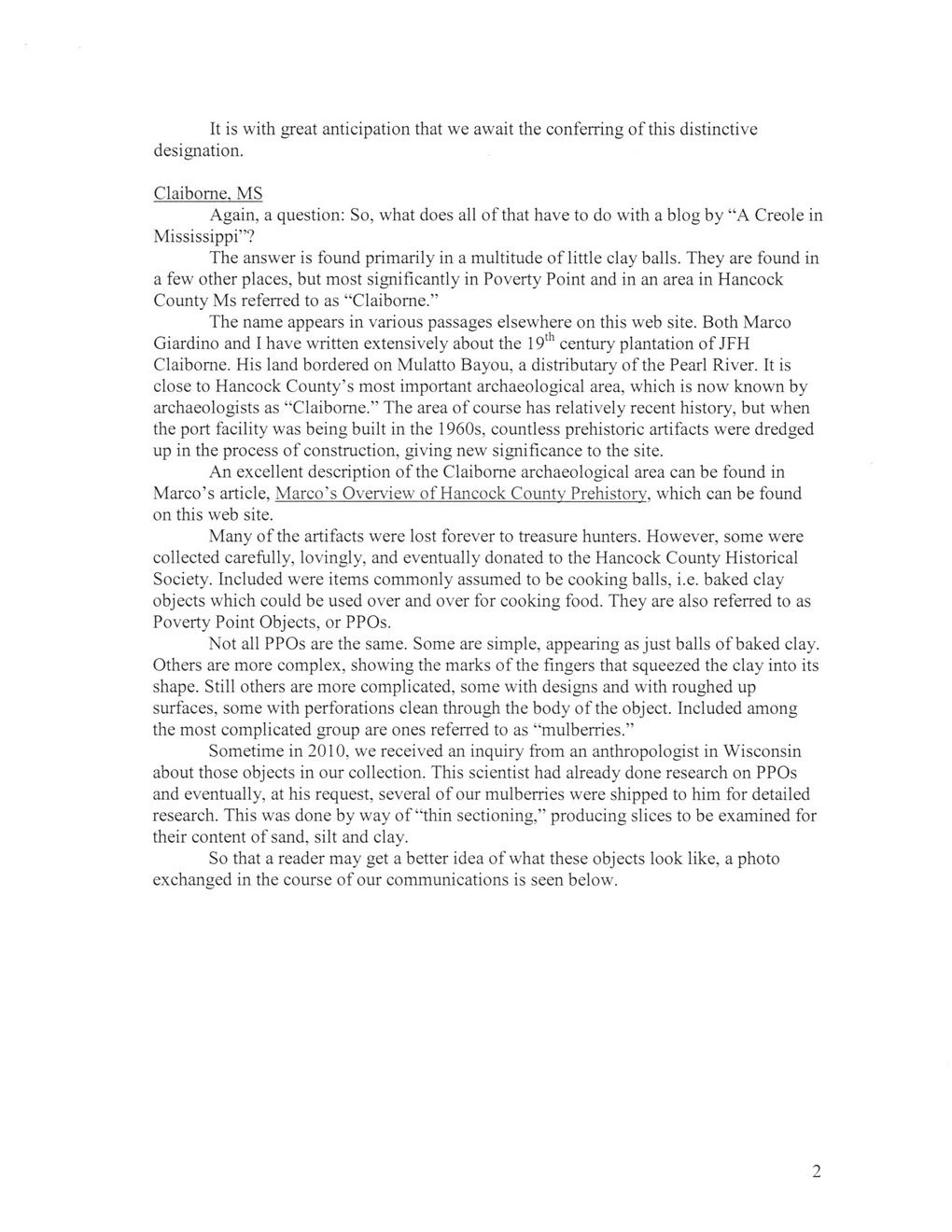This text was obtained via automated optical character recognition.
It has not been edited and may therefore contain several errors.
It is with great anticipation that we await the conferring of this distinctive designation. Claiborne, MS Again, a question: So, what does all of that have to do with a blog by “A Creole in Mississippi”? The answer is found primarily in a multitude of little clay balls. They are found in a few other places, but most significantly in Poverty Point and in an area in Hancock County Ms referred to as “Claiborne.” The name appears in various passages elsewhere on this web site. Both Marco Giardino and I have written extensively about the 19th century plantation of JFH Claiborne. His land bordered on Mulatto Bayou, a distributary of the Pearl River. It is close to Hancock County’s most important archaeological area, which is now known by archaeologists as “Claiborne.” The area of course has relatively recent history, but when the port facility was being built in the 1960s, countless prehistoric artifacts were dredged up in the process of construction, giving new significance to the site. An excellent description of the Claiborne archaeological area can be found in Marco’s article, Marco’s Overview of Hancock County Prehistory, which can be found on this web site. Many of the artifacts were lost forever to treasure hunters. However, some were collected carefully, lovingly, and eventually donated to the Hancock County Historical Society. Included were items commonly assumed to be cooking balls, i.e. baked clay objects which could be used over and over for cooking food. They are also referred to as Poverty Point Objects, or PPOs. Not all PPOs are the same. Some are simple, appearing as just balls of baked clay. Others are more complex, showing the marks of the fingers that squeezed the clay into its shape. Still others are more complicated, some with designs and with roughed up surfaces, some with perforations clean through the body of the object. Included among the most complicated group are ones referred to as “mulberries.” Sometime in 2010, we received an inquiry from an anthropologist in Wisconsin about those objects in our collection. This scientist had already done research on PPOs and eventually, at his request, several of our mulberries were shipped to him for detailed research. This was done by way of “thin sectioning,” producing slices to be examined for their content of sand, silt and clay. So that a reader may get a better idea of what these objects look like, a photo exchanged in the course of our communications is seen below. 2

Claiborne Historical Site Guerin-Giardino-(010)